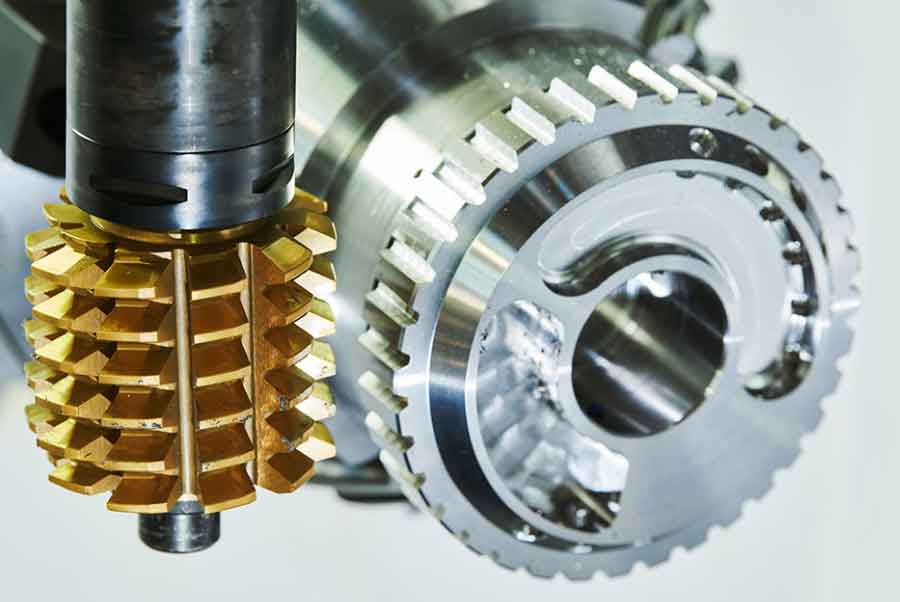Gear hobbing is a widely used gear manufacturing process, but it does come with certain challenges that need to be navigated to ensure high-quality gear production. Here are some common challenges in gear hobbing and strategies to overcome them:

- Tool Wear and Maintenance: Tool wear is a common challenge in gear hobbing that can affect the accuracy and quality of the produced gears. To overcome this challenge, regular tool inspection and maintenance are crucial. Implement a preventive maintenance program to monitor tool wear, replace worn-out hobs, and ensure proper lubrication to minimize friction and extend tool life.
- Chip Evacuation: Efficient chip evacuation is essential to maintain a clean cutting zone during gear hobbing. Inadequate chip evacuation can lead to chip clogging, poor surface finish, and tool damage. Use suitable chip breakers or chip deflectors to promote chip flow and optimize coolant or lubricant application to aid in chip removal.
- Vibration and Chatter: Vibration and chatter during gear hobbing can result in poor surface finish, inaccuracies, and increased tool wear. Proper machine setup, including alignment, balancing, and rigidity, is crucial to minimize vibrations. Optimize cutting parameters such as cutting speed, feed rate, and depth of cut to maintain stable cutting conditions and reduce the likelihood of chatter.
- Gear Distortion: During gear hobbing, especially with large and complex gears, gear distortion can occur due to the cutting forces involved. Proper workpiece fixturing and support can help minimize gear distortion. Consider implementing strategies such as pre-machining to remove excess material before hobbing or post-machining operations to correct any resulting distortion.
- Thermal Effects: Heat generated during the gear hobbing process can affect the dimensional accuracy and material properties of the gears. It is important to monitor and control the temperature during gear hobbing, especially for heat-sensitive materials. Implement suitable cooling and lubrication techniques to manage heat dissipation and minimize thermal distortion.
- Gear Measurement and Inspection: Ensuring the quality of the produced gears requires accurate measurement and inspection. Utilize appropriate gear metrology tools such as gear measuring machines, coordinate measuring machines (CMMs), and gear analyzers to verify gear dimensions, tooth profiles, and other critical parameters. Regularly calibrate and maintain measurement equipment to ensure accurate and reliable results.
- Process Monitoring and Control: Implementing process monitoring and control systems can help identify and rectify issues during gear hobbing. Real-time monitoring of cutting forces, temperatures, vibrations, and other process parameters can provide insights into the process stability and enable timely adjustments to optimize gear quality.
- Operator Training and Expertise: Gear hobbing is a skilled process that requires trained operators with expertise in machine setup, tooling, and process optimization. Invest in comprehensive training programs for operators to enhance their knowledge and skills, ensuring consistent and reliable gear production.
By addressing these challenges through proper machine setup, maintenance, process optimization, and quality control measures, gear hobbing can deliver high-quality gears with the desired accuracy, surface finish, and dimensional integrity. Regular evaluation and continuous improvement of the gear hobbing process will further enhance the overall gear production quality.
